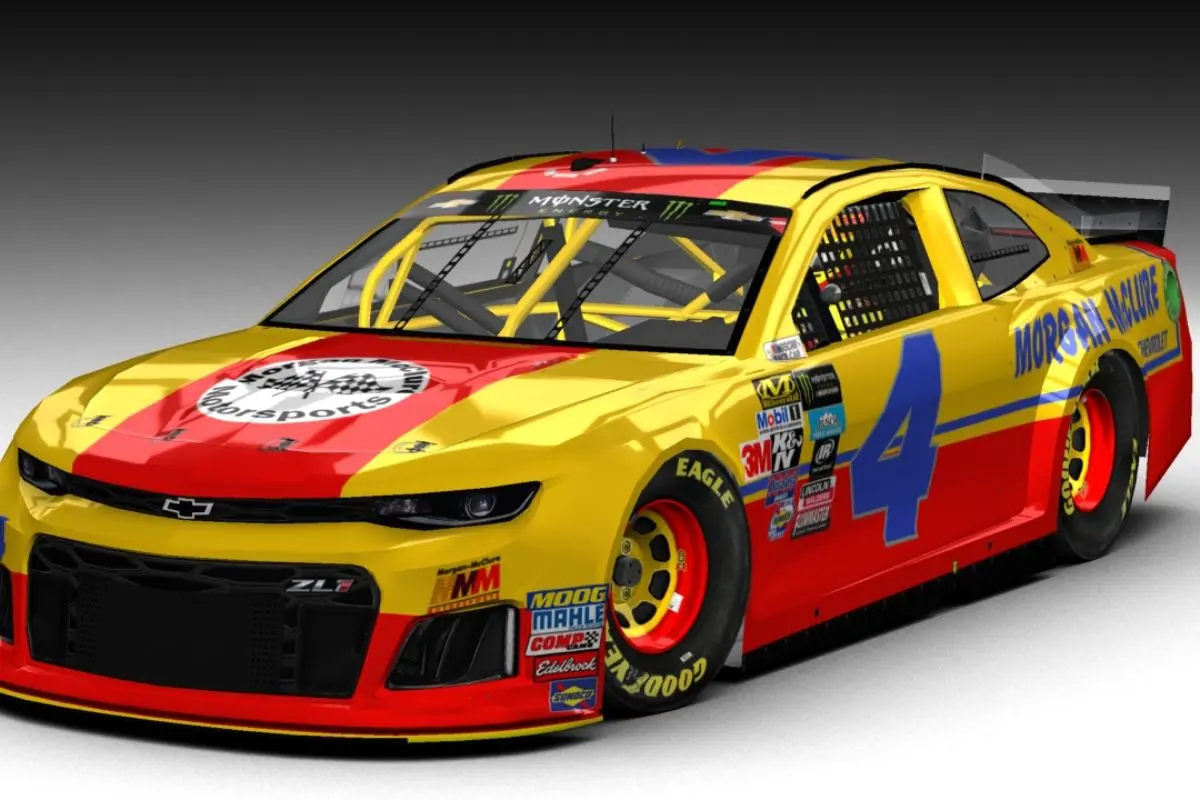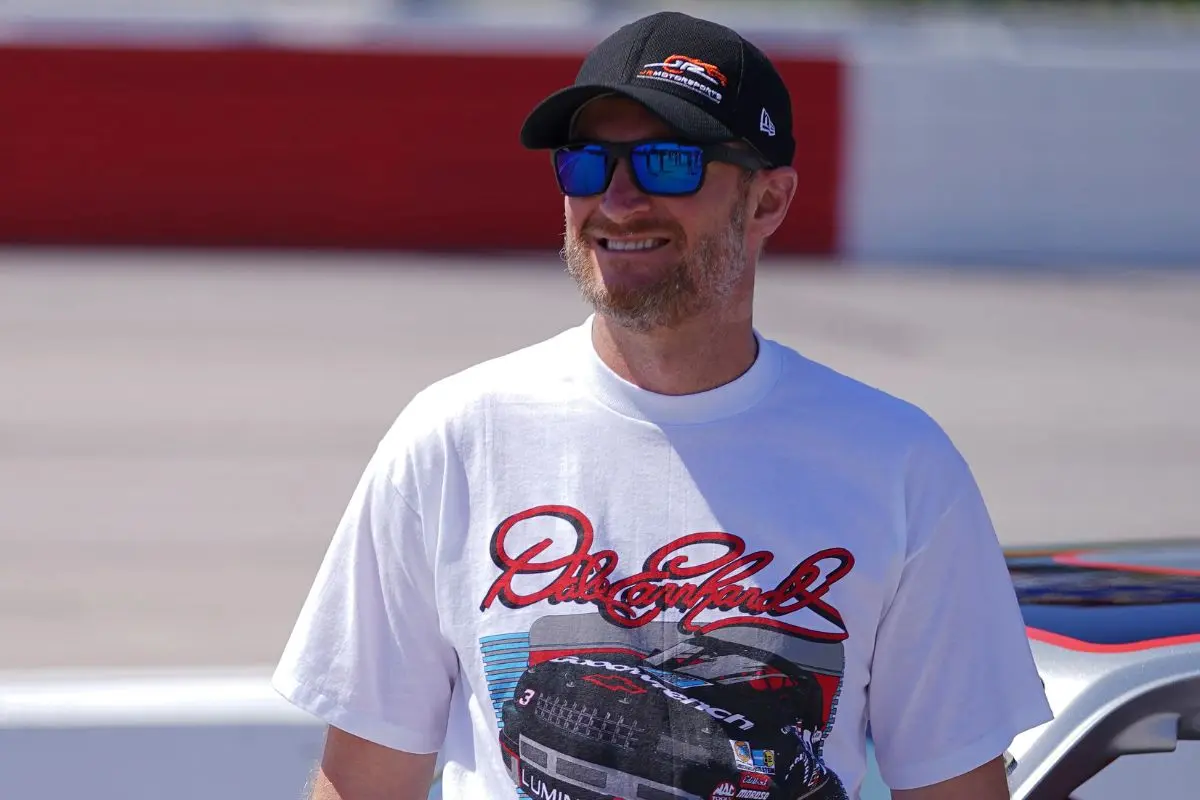Morgan McClure Motorsports was once a powerful force in NASCAR, known for their bright yellow cars and unforgettable wins. But NASCAR owner’s team lost everything, fading into history after a series of shocking legal troubles and missed opportunities. Behind their rise and fall was McClure, who was eventually sentenced to 18 months in federal prison for pleading guilty to five counts of filing a false income-tax return. His legal battles and the team’s financial struggles ultimately led to their downfall, marking the end of an era in NASCAR.
Key Highlights
- Declining performance in the early 2000s marked the beginning of Morgan McClure Motorsports’ downfall.
- Financial struggles led to reduced sponsorship and resources, hampering competitive capabilities.
- Key personnel departures, including Shelton Runt Pittman, significantly impacted the team’s engine performance.
- Increased competition and difficulty adapting to new NASCAR regulations contributed to their decline.
- Final closure in 2008, following layoffs and legal issues, marked the end of their NASCAR presence.
The Downfall of Morgan McClure Motorsports
In the annals of NASCAR history, the decline of Morgan McClure Motorsports stands as a poignant reminder of the volatile nature of professional racing. Emerging as a formidable presence with their distinctive yellow cars, the team became a staple in the NASCAR circuit. Yet, the promise of their vibrant theme dimmed over time as financial woes and legal troubles led to their eventual downfall.
Morgan McClure Motorsports was not immune to the economic pressures that often besiege racing teams. Despite a strong start, financial challenges became insurmountable, culminating in the team’s closure in 2008, with the final dissolution occurring in 2012. The layoffs of full-time employees were initially viewed as a temporary setback, but they foreshadowed the team’s ultimate fate.
The financial instability was exacerbated by Larry McClure’s legal troubles; his conviction for federal income tax fraud involving unreported earnings of $269,000 from cars used in the ARCA series was a considerable blow.
Dale Earnhardt Jr., a veteran of NASCAR, reflected on the circumstances, noting how teams like Morgan McClure must navigate a fragile landscape where financial missteps can have dire consequences. The narrative of their decline is one of missed opportunities to stabilize their finances and manage internal challenges effectively.
Morgan McClure Motorsports’ decline is emblematic of the broader struggles faced by racing teams working to maintain competitiveness and financial sustainability in a constantly changing industry.
 Kyle Busch Hits the Pace Car 2″ width=”1200″ height=”800″ srcset=”https://slicksandsticks.com/wp-content/uploads/2024/11/Kyle-Busch-Hits-the-Pace-Car-2.webp 1200w, https://slicksandsticks.com/wp-content/uploads/2024/11/Kyle-Busch-Hits-the-Pace-Car-2-300×200.webp 300w, https://slicksandsticks.com/wp-content/uploads/2024/11/Kyle-Busch-Hits-the-Pace-Car-2-1024×683.webp 1024w, https://slicksandsticks.com/wp-content/uploads/2024/11/Kyle-Busch-Hits-the-Pace-Car-2-768×512.webp 768w, https://slicksandsticks.com/wp-content/uploads/2024/11/Kyle-Busch-Hits-the-Pace-Car-2-630×420.webp 630w, https://slicksandsticks.com/wp-content/uploads/2024/11/Kyle-Busch-Hits-the-Pace-Car-2-150×100.webp 150w, https://slicksandsticks.com/wp-content/uploads/2024/11/Kyle-Busch-Hits-the-Pace-Car-2-696×464.webp 696w, https://slicksandsticks.com/wp-content/uploads/2024/11/Kyle-Busch-Hits-the-Pace-Car-2-1068×712.webp 1068w” sizes=”auto, (max-width: 1200px) 100vw, 1200px” />
Kyle Busch Hits the Pace Car 2″ width=”1200″ height=”800″ srcset=”https://slicksandsticks.com/wp-content/uploads/2024/11/Kyle-Busch-Hits-the-Pace-Car-2.webp 1200w, https://slicksandsticks.com/wp-content/uploads/2024/11/Kyle-Busch-Hits-the-Pace-Car-2-300×200.webp 300w, https://slicksandsticks.com/wp-content/uploads/2024/11/Kyle-Busch-Hits-the-Pace-Car-2-1024×683.webp 1024w, https://slicksandsticks.com/wp-content/uploads/2024/11/Kyle-Busch-Hits-the-Pace-Car-2-768×512.webp 768w, https://slicksandsticks.com/wp-content/uploads/2024/11/Kyle-Busch-Hits-the-Pace-Car-2-630×420.webp 630w, https://slicksandsticks.com/wp-content/uploads/2024/11/Kyle-Busch-Hits-the-Pace-Car-2-150×100.webp 150w, https://slicksandsticks.com/wp-content/uploads/2024/11/Kyle-Busch-Hits-the-Pace-Car-2-696×464.webp 696w, https://slicksandsticks.com/wp-content/uploads/2024/11/Kyle-Busch-Hits-the-Pace-Car-2-1068×712.webp 1068w” sizes=”auto, (max-width: 1200px) 100vw, 1200px” />
The Legacy and Success of Morgan McClure Motorsports
While the story of Morgan McClure Motorsports‘ decline highlights the challenges inherent in the racing industry, their legacy is marked by remarkable achievements that continue to resonate in NASCAR history. Founded in 1983, the team quickly established itself as a formidable force, carving its niche with the iconic No. 4 car.
The pinnacle of their success was certainly in the 1990s, a decade that saw Morgan McClure Motorsports achieve what many teams only dream of—mastery of the legendary Daytona International Speedway.
The team’s Daytona 500 victories are a confirmation of their skill and tactical brilliance. In 1991, Ernie Irvan’s win inaugurated a golden era for the team, setting a precedent for future triumphs. This success was not a fleeting moment; it signified the beginning of a legacy.
Sterling Marlin’s consecutive victories in 1994 and 1995 cemented the team’s dominance at Daytona, a track revered for its history and challenge. These back-to-back wins highlighted the team’s exceptional engineering, driver skill, and strategic intelligence.
Morgan McClure Motorsports’ legacy extends beyond these victories. Their triumphs in the Pepsi 400, with Irvan in 1992 and Marlin in 1996, further solidified their reputation as a powerhouse in stock car racing.
Over a span of six years, the team amassed five points-paying victories at Daytona, a feat that remains etched in NASCAR’s rich narrative. These achievements not only highlight their competitive spirit but also their contribution to NASCAR’s storied history, leaving an indelible mark on the sport.
The Key Factors Behind Morgan McClure Motorsports’ Decline
Morgan McClure Motorsports’ decline was a multifaceted process marked by notable personnel changes and evolving industry dynamics. Integral to its unraveling was the departure of key figures whose expertise and leadership had been foundational. Shelton Runt Pittman, the esteemed head engine builder, departed after the 2004 Daytona 500. His engineering skill, particularly in optimizing horsepower, had been pivotal to the team’s competitive edge. Likewise, Tony Glover’s exit in 1996 left an indelible void. Glover, with his rich heritage and innate track insight, steered Morgan McClure to three Daytona 500 victories. His shift to SABCO Racing signaled a change that the team struggled to recover from.
Compounding these personnel losses was the absence of major sponsorships, a factor that emphasized the team’s difficulties. In NASCAR, where financial backing is as vital as specialized expertise, Morgan McClure found itself at a disadvantage. The lack of big-brand sponsors meant limited resources for innovation and talent acquisition, further exacerbating their competitive decline.
Historically, Morgan McClure’s story is a reflection of how the synergy of talent and resources defines success in motorsports. As industry dynamics shifted, the inability to adapt swiftly and effectively sealed their fate. The legacy of Pittman and Glover remains, yet their absence marked the end of an era, leaving an indelible mark on NASCAR’s vibrant mosaic.

Dale Earnhardt Jr. Reflects on Morgan McClure Motorsports’ Decline
Dale Earnhardt Jr. offers a compelling perspective on the unraveling of Morgan McClure Motorsports, a team once synonymous with triumph in NASCAR’s fiercely competitive arena. As a seasoned observer and participant in the sport, Earnhardt Jr. elucidates the critical elements that contributed to the team’s decline, particularly the exodus of pivotal figures such as Runt Pittman and Tony Glover. Their departures marked a turning point, stripping the team of its core tactical and technological competencies, crucial for maintaining a competitive edge in the high-stakes world of NASCAR racing.
Earnhardt Jr. reflects on the profound impact these individuals had on Morgan McClure Motorsports during its zenith. Pittman and Glover were more than just team members; they were the architects of the plans that propelled the team to victory, crafting an environment where innovation met execution.
“Losing Runt Pitman and Tony Glover.” – Dale Earnhardt Jr.
Their expertise was woven into the fabric of the team’s operations, and their absence created a vacuum that proved difficult, if not impossible, for the team to fill. Without their guiding hands, the team struggled to adapt to the evolving landscape of NASCAR, where technological advancements and tactical insight are paramount.
Dale Earnhardt Jr.’s 2025 Racing Career Goals
In 2025, the racing world will witness a new chapter in Dale Earnhardt Jr.’s illustrious career, as he sets out to achieve three ambitious goals that reflect both his passion for the sport and his commitment to its digital evolution.
Dale Jr., a revered figure in motorsports, has long been a vocal advocate for the expanding field of iRacing—a virtual racing platform that has captured the imaginations of racers and fans alike. His 2025 goals focus on mastering three iconic tracks: Winchester, Florence, and Berlin. While two of these tracks are already scanned, the challenge lies in obtaining the necessary licensing for the third, demonstrating his steadfast dedication to expanding the iRacing landscape.
“Winchester, Florence, Berlin. Two are scanned and one is currently unlicensed.” – Dale Earnhardt Jr.
Earnhardt Jr.’s engagement with iRacing is not merely a pastime; it is a mission to preserve and promote the rich tradition of short-track racing. His efforts have garnered appreciation from the racing community, with fans applauding his commitment to an oft-overlooked segment of the sport.
“Thanks for fighting for the short track community! I’m sure it’s not as popular as other forms of racing on the service. Winchester and Salem have been on my bucket list for years.” – NASCAR Fans’ Reaction
Additionally, his endeavors in iRacing mirror the groundbreaking spirit that has defined his career, further solidifying his legacy as a pioneer in digital motorsports.
Beyond the virtual domain, Dale Jr. remains a formidable presence in the real world of racing. His leadership of JR Motorsports, alongside reigning Xfinity champion Justin Allgaier, emphasizes his multifaceted influence on the sport.
As he navigates the complexities of his 50th year, Dale Jr.’s ambitions in 2025 exemplify a seamless integration of tradition and creativity, setting a new standard for future racers.

News in Brief: How an 18-Month Jail Sentence Owner’s Team Lost Everything
Morgan McClure Motorsports’ expedition from triumph to decline serves as a poignant chapter in NASCAR history. Its legacy, marked by notable successes, highlights the impact of tactical decisions and adaptability in racing’s competitive landscape. The team’s downfall, influenced by financial struggles and evolving industry demands, provides a cautionary tale of the volatility inherent in motorsports. Reflecting on its past, notable figures such as Dale Earnhardt Jr. offer valuable perspectives, shaping future aspirations and understanding of NASCAR’s dynamic environment.
ALSO READ: Dale Earnhardt Jr. Finally Gets Amy’s Approval for Surprises After a Hilarious Christmas Debate
